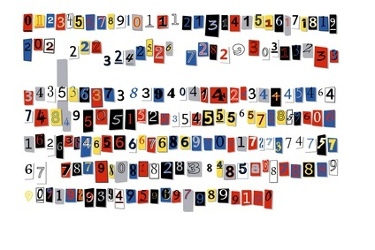
Do you know the difference between HS codes, HTS codes, and Schedule B codes? In casual conversation, exporters tend to use these terms interchangeably; they, for the most part, understand that these are codes representing classifications of products.
While it’s not wrong to use them interchangeably in casual conversation, it is important to understand the differences—if not, you could get into trouble, and your shipment could, too!
Here are the definitions of the terms and examples of use cases when it is appropriate to use each term:
Harmonized System (HS) Code
The Harmonized System classification is a six-digit standard, called a subheading, for classifying globally traded products. HS codes, also called HS numbers, are used by customs authorities around the world to identify the duty and tax rates for specific types of products. You can learn more about these codes in our comprehensive resource for all exporters—Export Procedures and Documentation: An In-Depth Guide.
HS codes are administered by the World Customs Organization. HS codes are recognized in 98% of world trade. (A Basic Guide To Exporting)
There are six digits in an HS code. You use an HS code because it is a universal classification tool—many governments add additional digits to the HS number to further distinguish products in certain categories. These additional digits are typically different in every country.
HS codes are used in most international export documentation and commercial invoices (unless your product falls into one of these categories).
Use Case: You’ll use an HS number when you are referencing the classification with your customers, vendors and anyone outside of the U.S.
When you’re completing export documentation, any documents that are used internationally, like the commercial invoice, should display the six-digit HS code instead of a longer code. (Click here to see a sample of a completed commercial invoice.) If you use a 10-digit code, the numbers may not be accurate for the country of import.
Harmonized Tariff Schedule of the United States (HTS-US) Code
The Harmonized Tariff Schedule code is a 10-digit import classification system that is specific to the United States. HTS codes, also called HTS numbers, are administered by the U.S. International Trade Commission (ITC). It’s very important that all U.S. importers know and use the correct HTS-US codes, because commodity duties are assessed based on this classification. An HTS code takes the same form as an HS code for the first six digits, and then has four differing last digits.
Use Case: If you are a U.S. importer, this is the code you must use. The comprehensive classification list available for free on the ITC website.
You can learn more about HTS codes in our two-part series, The Harmonized Tariff Schedule: General Rules of Interpretation Never Written (But Used Daily) and The Harmonized Tariff Schedule: Beyond the General Rules of Interpretation.
Schedule B Code
The Schedule B code is a 10-digit subset of HTS codes for U.S. exporters. Schedule B codes are used for statistical purposes by the U.S. government to monitor U.S. exports.
Schedule B codes are maintained by the U.S. Census Bureau instead of the ITC.
As with HTS codes, the first six digits of a Schedule B code should be the same as an HS number; however, the last four digits may be different even than the HTS code.
Use Case: Companies that export will typically use the appropriate Schedule B codes for their products rather than HTS codes on their export paperwork and when filing their electronic export information (EEI) through the Automated Export System (AES). Since the Schedule B codes are a subset of the HTS codes, it's usually quicker and easier to classify products under Schedule B than HTS.
Companies that are already classifying their products using the HTS codes for their imports may want to use HTS classification for all their products to eliminate the need to classify their products twice—once under HTS and once under Schedule B. That is perfectly acceptable, but do keep in mind that there are certain HTS codes that can't be used for exporting.
Also, the reverse is not true. You cannot use Schedule B codes in place of HTS codes for import classifications.
Use Case: Companies that export will typically use the appropriate Schedule B codes for their products rather than HTS codes on their export paperwork and when filing their electronic export information (EEI) through the Automated Export System (AES). Since the Schedule B codes are a subset of the HTS codes, it's usually quicker and easier to classify products under Schedule B than HTS.
Companies that are already classifying their products using the HTS codes for their imports may want to use HTS classification for all their products to eliminate the need to classify their products twice—once under HTS and once under Schedule B. That is perfectly acceptable, but do keep in mind that there are certain HTS codes that can't be used for exporting.
Also, the reverse is not true. You cannot use Schedule B codes in place of HTS codes for import classifications.
BRIEF
INTRODUCTION
Cnbearing
is the No.1 bearing inquiry system and information service in
China, dedicated to helping all bearing users and sellers throughout
the world.
Cnbearing is supported by China National Bearing Industry Association,
whose operation online is charged by China Bearing Unisun Tech.
Co., Ltd.
China Bearing Unisun Tech. Co., Ltd owns all the rights. Since
2000, over 3,000 companies have been registered and enjoyed
the company' s complete skillful service, which ranking many
aspects in bearing industry at home and abroad with the most
authority practical devices in China.

